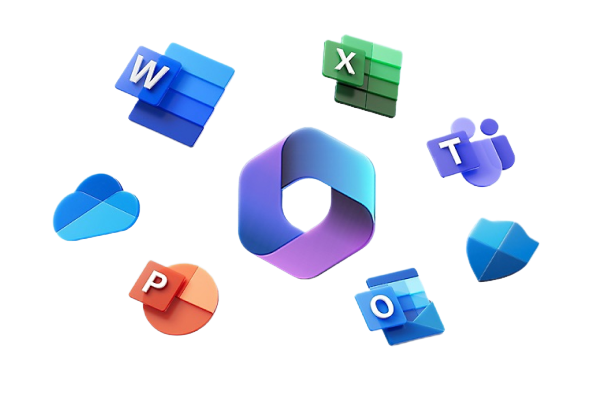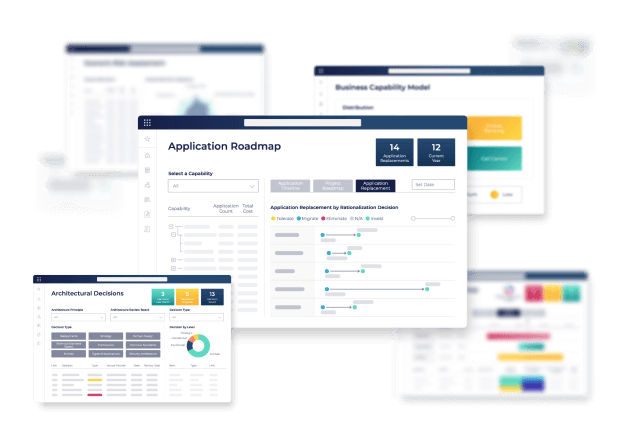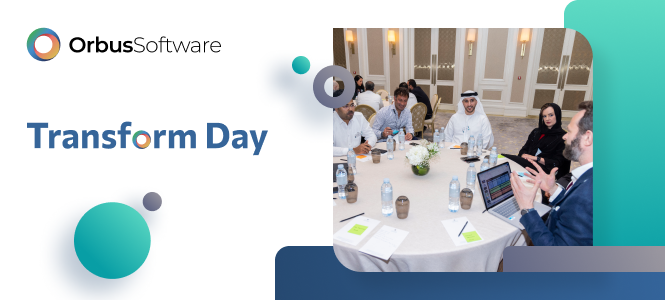Orbus Software's fourth Transform Day took place in Dubai in May, bringing together customers and partners to explore operational resilience, changing regulations, and the future of Enterprise Architecture.
After three successful Transform Days over the last year, the Orbus Software team was excited to hold our latest event in the Middle East. Taking place in Dubai, the day was full of brilliant discussions and networking, followed by some well deserved post-event drinks.
Our Transform Days aim to achieve two goals. Firstly, to speak with our customers to learn more about the challenges and experiences they are having on their digital transformation journeys. This feedback is crucial to our own development and informs critical business decisions that can support our clients. Secondly, we find value in dedicating a day to sharing our own knowledge and insights about Enterprise Architecture and cloud solutions. After all, these interactions are two-way conversations and all about knowledge sharing.
These conversations took the form of roundtable discussions where attendees debated a wide range of different topics - from architecture governance, to iServer roadmaps, to the importance of standardization to manage change. And that was just the beginning.
Here we take a deeper dive into the event, discussing some of the key insights from the day.
Insights and innovation
Companies want to be operationally resilient
When it came to the topic of disruption, an interesting point was raised about the importance of a ‘what if’ scenario in the case of an unexpected event. For example, during the pandemic, it was stressed that our customers needed to understand properly how to shift to a remote workforce, and quickly. Customers needed to move to the cloud, at minimum risk.
While we learned a lot from COVID-19, what does this mean for the future? How can customers future-proof their architecture for inevitable disruption? As we have seen, disruption can be just around the corner, without us even knowing it. So countering in ‘what if’ scenarios are critical in order to be operationally resilient.
Is EA too IT focused?
One of the points raised was that Enterprise Architecture is too IT focused. As a company, we need CIO dashboards, but also CEO outputs. This is because businesses need to be considered very seriously as they are driving transformation, making difficult decisions about digital transformation solutions.
However, the duplication of IT solutions can happen instead and this is a major challenge. Why? Since decisions can take place in silos, even with strong governance to avoid it, teams are coming back with different solutions. These have different reporting and workflows, all this specific to them. A more holistic approach needs to be taken in the future.
Will AI be a popular trend in the future?
The use of artificial intelligence AI is quickly becoming ever recognized within the innovation side of Enterprise Architecture. AI can be used as a tool to identify unusual behavior or architecture practice, or it can be used to provide a better way to identify duplicates in capabilities and suggest actions.
The discussion at our Transform Day raised the point that it would be beneficial to leverage the data from our customers in order to assess the use of automation in the industry and whether it’s a popular trend we’re seeing. In turn, we’ll be looking to see how AI and machine learning can be used to better serve our customers.
The challenge of governance
Another challenge that was raised was concerned with how to establish governance that is efficient and easy to use enough to process change quickly. Architects daily have to deal with situations where design is properly done through modeling. However, by the time the design is approved, the solution is already up and running. In turn, there is a disconnect between processes and governing bodies.
This can potentially (once again) create duplications and conflicts internally. While application rationalization is required to solve this, its implementation is actually not likely because the perceived value is none.
So, when it comes to governance, this is not just about how it needs to be incorporated into a new application in the repository, but also what is needed outside of this. For example, it is important to have templates and reporting associated with it. There needs to be a specific mention of the standard security model you want to have, and to also guide users through this standard. Finally, we need to assess how that application is going to behave, what is the data classification, and the impact of this.

















